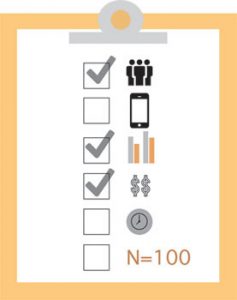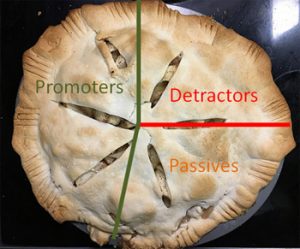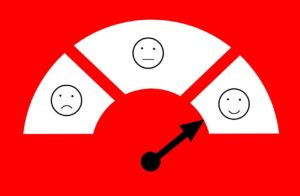Topics
Topics

A Checklist For Planning a UX Benchmark Study
Benchmarking the user experience of a website, app, or product is essential to understanding how the experience is for your users and if you’re making effective changes to the interface over time. A UX benchmark is similar to going to the doctor to get your blood pressure, weight, and cholesterol checked. You get a series

Better to be Approximately Right than Exactly Wrong
It’s better to be approximately right than exactly wrong. A version of those words came from an 18th century author named Carveth Read in a book on logic and reasoning. The quote is often misappropriated to John Maynard Keynes, the more famous economist and early statistician. Despite the age of the quote and misappropriation, it’s

5 Ways to Find Out More About Your Customers
It’s fundamental to creating both a usable customer experience and a better business: you need to know who your customers are. It however can be surprisingly difficult for organizations to connect with their customers to collect information. But just because it isn’t easy doesn’t mean you should skip it. Collecting core demographic information and customer

6 Best Practices for Using Numbers to Inform Design
Your job title doesn’t have to be “researcher” or “statistician” to use data to drive design decisions. You can apply some best practices even when numbers aren’t your best friend. It’s actually easier when you’re a designer to enhance your skills with quantitative data than for statisticians to enhance their analytical skills with design principles.

Is the Net Promoter Score a Percentage?
As if the Net Promoter Score didn’t already stir up enough strong opinions about whether it’s the “right” metric for organizations, now there’s a new controversy: how to display it. In case you’re unfamiliar with it, the Net Promoter Score (NPS) is a popular measure of customer loyalty. It’s derived by asking a single question

10 Essentials of Measuring Usability
Observing just a few users interact with a product or website can tell you a wealth of information about what’s working and not working. But to loosely quote Lord Kelvin, when we can measure something and express it in numbers, we understand and manage it better. Measuring usability allows us to better understand how changes

The Benefits of Aggregating Judgment
How many jelly beans are in the jar? Your best guess is probably wrong. But if I were to ask a few hundred people their guesses and calculate the average, the average would turn out to be pretty accurate. Some guesses are in fact correct, but they are rare and you don’t know ahead of
5 Steps to Conducting an Effective Expert Review
Expert reviews aren’t’ a substitute for usability testing and don’t provide metrics for benchmarking. But they are an effective and relatively inexpensive way to uncover the more obvious pain points in the user experience. Expert reviews are best used when you can’t conduct a usability test or in conjunction with insights collected from observing even

Managing False Positives in UX Research
Don’t you hate when that email you were looking for ended up in your spam folder? Or when you go through security at the airport and the medical detector flags your belt or shoes as something nefarious? Or when you get a medical test back that indicated a problem only to find out everything was

7 Survey Types to Measure the Customer Experience
Surveys are a relatively quick and effective way to measure customers’ attitudes and experiences along their journey. Not all customer experience surveys are created equal. Depending on the goals, the type of questions and length will vary. While customer experience surveys can take on any form, it can be helpful to think of them as
What are the Odds?
Percentages are popular. Executives like them, the media reports them, and we hear them every day. We use percentages all the time in UX research. They can be based on demographics: Percent women Percent millennials Percent who are current customers Or based on attitudes and actions: Percent completing a task Percent recommending a product Percent

How to Measure Customer Satisfaction
By far the most common and fundamental measure of customer attitudes is customer satisfaction. Customer satisfaction is a measure of how well a product or service experience meets customer expectations. It’s a staple of customer analytic scorecards as a barometer of how well a product or company is performing. You can measure satisfaction on everything